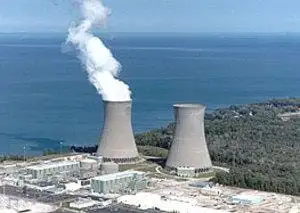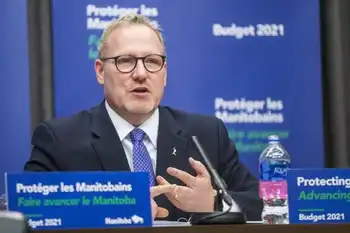PGE ranks among highest in solar generation
By Business Wire
Arc Flash Training CSA Z462 - Electrical Safety Essentials
Our customized live online or in‑person group training can be delivered to your staff at your location.

- Live Online
- 6 hours Instructor-led
- Group Training Available
In SEPA's report, the "2008 Top Ten Utility Solar Integration Rankings," PGE ranked eighth in the nation — and fourth in the West — in total solar megawatts. The annual rankings are based on the amount of solar electricity installed during the 2008 calendar year. PGE integrated more than 3.5 megawatts AC of solar power into its system, more than tripling the amount of solar resources connected to its system.
"In 2008 Portland General Electric established itself as 'one to watch' regarding utility solar integration," said Julia Hamm, SEPA executive director. "In today's shifting energy landscape, electric utilities face a new challenge in determining how to integrate solar electricity in a way that benefits the utility, its shareholders, and society at large. PGE is one of the utilities leading the charge to find innovative business models that accomplish this goal."
PGE also appeared on several other SEPA rankings for its 2008 solar activity, including:
• Sixth in the nation in total solar megawatts on the utility-side of the meter;
• Eighth in the nation in total solar megawatts on the customer-side of the meter;
• Ninth in the nation for solar watts per customer on utility-side of the meter;
• Eighth in the nation for total solar megawatts and ninth in the nation in total solar watts per customer among investor-owned utilities.
"PGE and our customers are committed to integrating more renewable energy, including solar, into our generation portfolio, which will help us reach the state's renewable energy standards of 25 percent renewables by 2025," said Bill Nicholson, vice president, customers and economic development, PGE.
"We could not have achieved this important milestone without the hard work and determination of our customers, business partners, community leaders, and the state of Oregon. We are all working together to ensure Oregon becomes a solar leader in everything from solar manufacturing to solar installations for our customers."
During 2008, PGE installed two major solar installations in Oregon: the nation's first solar highway project at the I-5/I-205 interchange in Tualatin and the Northwest's largest rooftop installation in Portland.
The solar highway demonstration project, a collaboration by PGE, US Bank and the Oregon Department of Transportation (ODOT), began supplying renewable power in December 2008 to help light the way for drivers at the Interstate 5 and Interstate 205 interchange in Tualatin. The 104-kilowatt photovoltaic system covers about 8,000 square feet — roughly the length of two football fields — and will produce about 112,000 kilowatt hours a year, or 28 percent of the 400,000 kilowatt hours used to light the interchange.
"PGE's exceptional leadership made it possible for Oregon to complete America's first solar highway project," said Allison Hamilton, solar highway project director, ODOT. "No other utility in the nation has made that commitment. Oregon values the innovative public-private partnership pioneered with PGE to power the transportation system of the future."
The 1.1-megawatt rooftop ProLogis solar project, the largest in the Pacific Northwest, began generating solar power in December 2008. The project, which uses "thin-film" solar panels, is installed on the rooftops of three ProLogis distribution warehouses in northeast Portland and covers more than 328,000 square feet.
Currently, PGE has 6.5 megawatts of solar capacity interconnected in PGE's operating area with almost 400 solar "net metering" customers (customers who generate their own electricity), which is enough to power 600 homes and offset 4,322 tons of carbon dioxide emissions per year.











